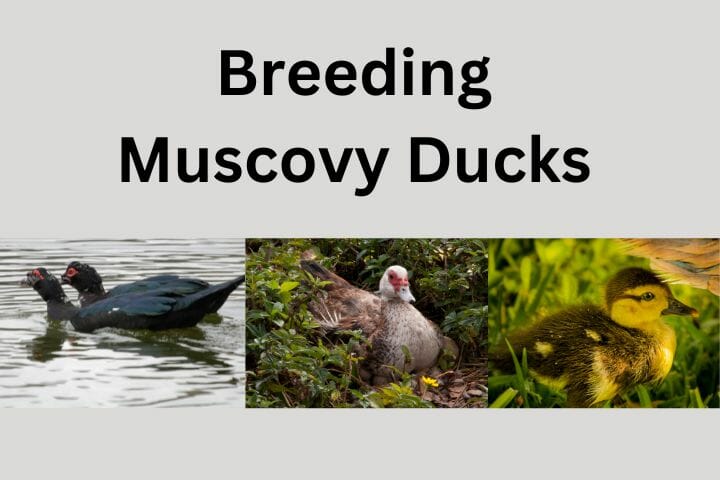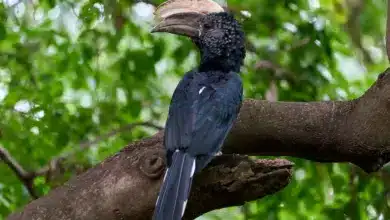How Do Ducks Mate? Amazing and Frightening Sex Lives of Ducks
Ducks are commonplace, but their sex lives are nothing but common. In this article, we look at how ducks mate and why duck sex can sometimes be very ugly.
Ducks have small bodies and look like cute and innocent birds at first glance, but their sex lives aren’t as rosy.
They are one of the very few bird species that still have penises and vaginas in males and females, respectively.

In addition, they have odd-shaped reproductive organs, making their mating process even more intriguing. This article will discuss mating in ducks and how this species of bird mates.
Understanding Duck Mating
Male ducks begin mating by courting the female. Female ducks chose their mate on parameters such as the color of their coat (plumage) and the vigor and vitality of their courtship display.
We will discuss their courtship displays in the next section. Meanwhile, let us talk about the act of sex itself.
While ducks are otherwise gentle creatures, mating in this bird species can get quite violent, to the point of being dangerous for the female.
How Do Ducks Select Their Seasonal Mate?
The number of male ducks is more than females. Thus, females have the upper hand in the choice of partners due to natural selection. Male ducks put up several acts and gestures to lure females.
The female then chooses the male based on how good she feels the display was.
Colorful plumage, the moves the drake puts on display, and the perceived strength of a male to defend the female from predators are some of the parameters that she uses to choose.
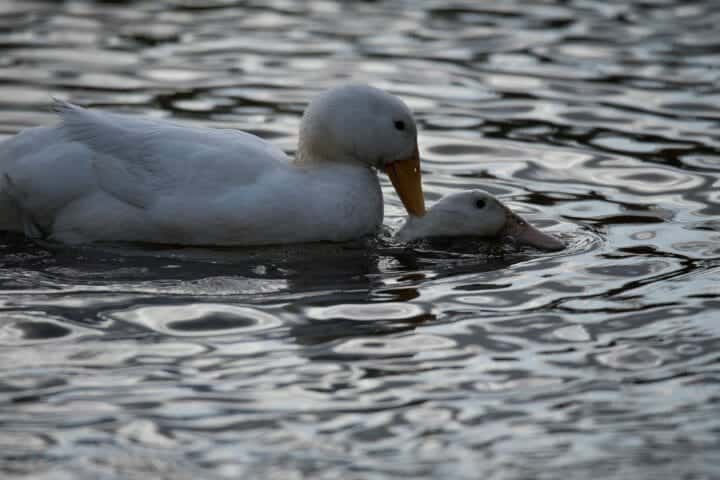
How Female Ducks Fool Males Who Are Too Persistent
Due to lesser numbers, the female should ideally be in a position to choose, but many male ducks are over-persistent and try to force females into sex. But females have a few tricks up their sleeves.
The duck penis is corkscrew-shaped in an anti-clockwise direction, whereas the female duck’s vaginal tract is also corkscrew-shaped but in a clockwise direction. Yes, ducks’ sex organs are weird.
But that’s not even the most interesting part! The female’s vaginal canal also has a false pocket.
The purpose of this pocket is to mislead those male ducks from fertilizing the female ducks’ eggs with unwanted sperm which she doesn’t want to!
This false pocket tricks the male into believing he has done his job, but, in reality, none of his sperm will journey to the eggs, leaving him without a bloodline to father!

Forced Copulation and How It Can Be Dangerous for the Female
Despite these tricks, female ducks often deal with unwanted sex. Female ducks face forced copulations as much as 40% of the time. Just 1 in 4 matings is successful.
Stray male ducks that could not find mates force themselves onto female ducks. Mallards or wild ducks are notorious for this heinous activity.
Forced copulation is fairly common in many species of ducks. They are planned and socially organized rapes by aggressive males that are violent, dangerous, and even deadly.
Instances of forced copulation in the past have caused the female duck to be left bloody, swollen, and injured. Sometimes, the situation gets so ugly that it leads to the death of the female duck.
What Is a Good Number of Male Ducks to Female for Fertility?
The male-to-female ratio for backyard farm ducks depends on the breed of the duck. One male to 5 females is a good ratio for large duck breeds such as Muscovy and Perkin.
One male to 10 female ducks is good enough for smaller duck breeds such as the Indian Runner and Mallards (Anas platyrhynchos).
The Hilarious World of Duck Courtship Displays
Duck courtship involves both subtle gestures and elaborate moves. For example, to see a duck courtship among a group of Mallards (wild ducks), you would have to patiently wait and watch the chain of events for up to a minute.
Most of the time, they are either resting or eating, but you can see their courtship gestures when they are actively swimming around.
Head-Bobbing (Both Sexes)
Head bobbing is also known as head pumping (yes, it’s the same thing humans do in rock concerts).
Both male and female ducks rhythmically bob their heads. They repeat this many times and mate after this. Watch the video below to see this in action:
Flat-Backing (Females)
The neck and back of the head are sexually sensitive spots in ducks. Flat-backing, in a way, helps them prepare for the lovemaking that is about to happen, especially since the male is about to mount.
After head bobbing begins, female ducks elongate their necks and flatten their backs, raising up their tail feathers.
Flat backing is a clear green signal to the male. The female becomes the designated lower one in the act of sex.

Whistle-Grunt (Males)
A group of drakes will make a whistle-grunt move to show off to females. First, the drake comes out of the water, pulls his head up, and whistles.
He then grunts and goes back to his normal position. This is a short-lived move, taking just a second or even less.
Head-Down Victory Lap (Males)
Once the whistle-grunt is over, the drake lowers his head and swims a few brisk laps around the pool. The head-down victory lap looks like a celebratory move to show that they have successfully “done it.”
Facts About Duck Mating
Duck mating rituals are funny, but there is much more to their mating than just these moves and the unusually shaped sex organs. Here is some more information that you should know.
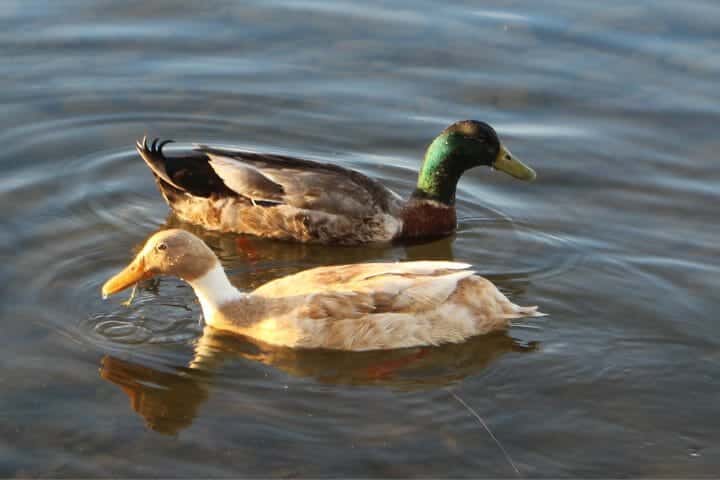
Duck Love Isn’t Always Binary.
Ducks such as the female welsh harlequins can mate with each other. These ducks can become hermaphrodites if there is no male around and can grow a penis as well.
Contrary to popular opinion, owners need not necessarily rear mixed-sex flocks.
Female ducks that mate with each other also get attached emotionally and go into long mourning phases when their partner passes away.
Do Ducks Mate for Life?
No, ducks do not mate for life. Instead, they form seasonal bonds, which is also called seasonal monogamy.
Almost 49 percent of the waterfowl species form seasonal bonds. Each winter season, ducks find a new mate and make a new bond for that particular season.
Plumage, Molting, and Mating Cycles
Feathers of waterfowls are built-to-last, but they wear out over time. They replace all their feathers with new plumage yearly, which is molting.
Molting occurs shortly after the nesting season, making them flightless for a short period.

Birds such as whistling ducks, swans, and geese undergo one annual molt, and other ducks can even undergo two annual molts.
One occurs after nesting and the second between fall to early winter.
Post mating season, when the female ducks are engaged in hatching the eggs, the male ducks molt and lose their colorful feathers.
At What Age Can Ducks Start Mating?
Lighter-weight duck breeds start mating between 17-24 weeks, and heavier duck breeds start mating between 20-30 weeks of age.
What Season Do Ducks Mate In?
Many duck bonds happen between august and may. Wild ducks mate in the spring through early summer, where they get lots of food, more hours of sunshine, and warm temperatures.
How Many Times a Year Do Ducks Mate?
Ducks mate around six to eight times during a breeding season. This number depends on the species of ducks and where the ducks live.
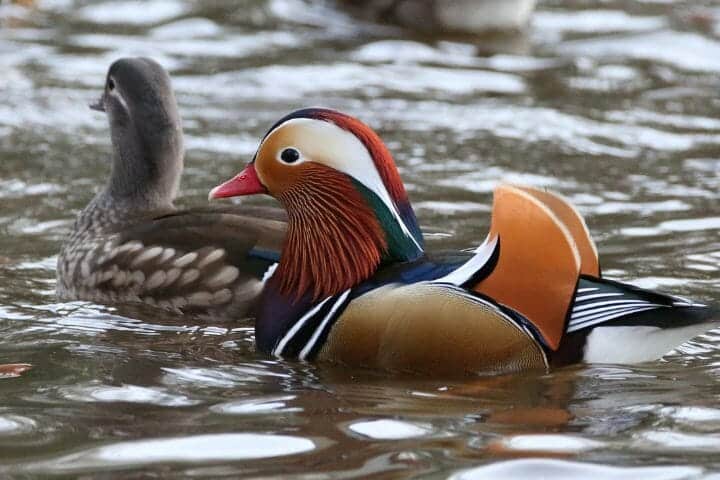
How Many Ducklings Do Ducks Have?
Generally, female ducks lay between 10 to 15 eggs, depending on their species. However, the number of eggs that Mallards lay can be around 10 to 12, and those laid by Muscovy ducks can be up to 18. On a side note, ducklings are loving siblings and can communicate with each other even before hatching.
How Long Are Ducks Pregnant?
Ducks are very caring parents. They show this concern and care even during pregnancy. Post-mating, the mother duck lays her eggs in a safe environment.
She then incubates them. On average, incubation takes about 28 days. The muscovy ducks take the longest to incubate, about 36 days.
Can Ducks Lay Eggs Without Mating?
Like chickens, ducks can lay eggs without mating, but these eggs would not hatch because the male duck (drake) has not fertilized them. Some hermaphrodite ducks can even create fertilized eggs without having a single drake around.

Do Male Ducks Sit on Eggs?
No, male ducks or drakes do not sit on eggs. Instead, they act as a guard and watch over the eggs to prevent harm from predators. However, if one ever comes across a nest full of duck eggs left unattended, it is likely to be abandoned.
Final Thoughts
Ducks are a unique bird species, and their mating practices are even more unique. Mating involves a seasonal bond and a selective process where the drake engages in courtship displays, and the female duck chooses a mate.
Unfortunately, the skewed sex ratio means female ducks often have to deal with unwanted and forced copulation. However, once they mate, both seasonal bonded ducks are great parents to their chicks.
We hope you enjoyed this information and would look at any ducks in your area in a very different light after reading.

